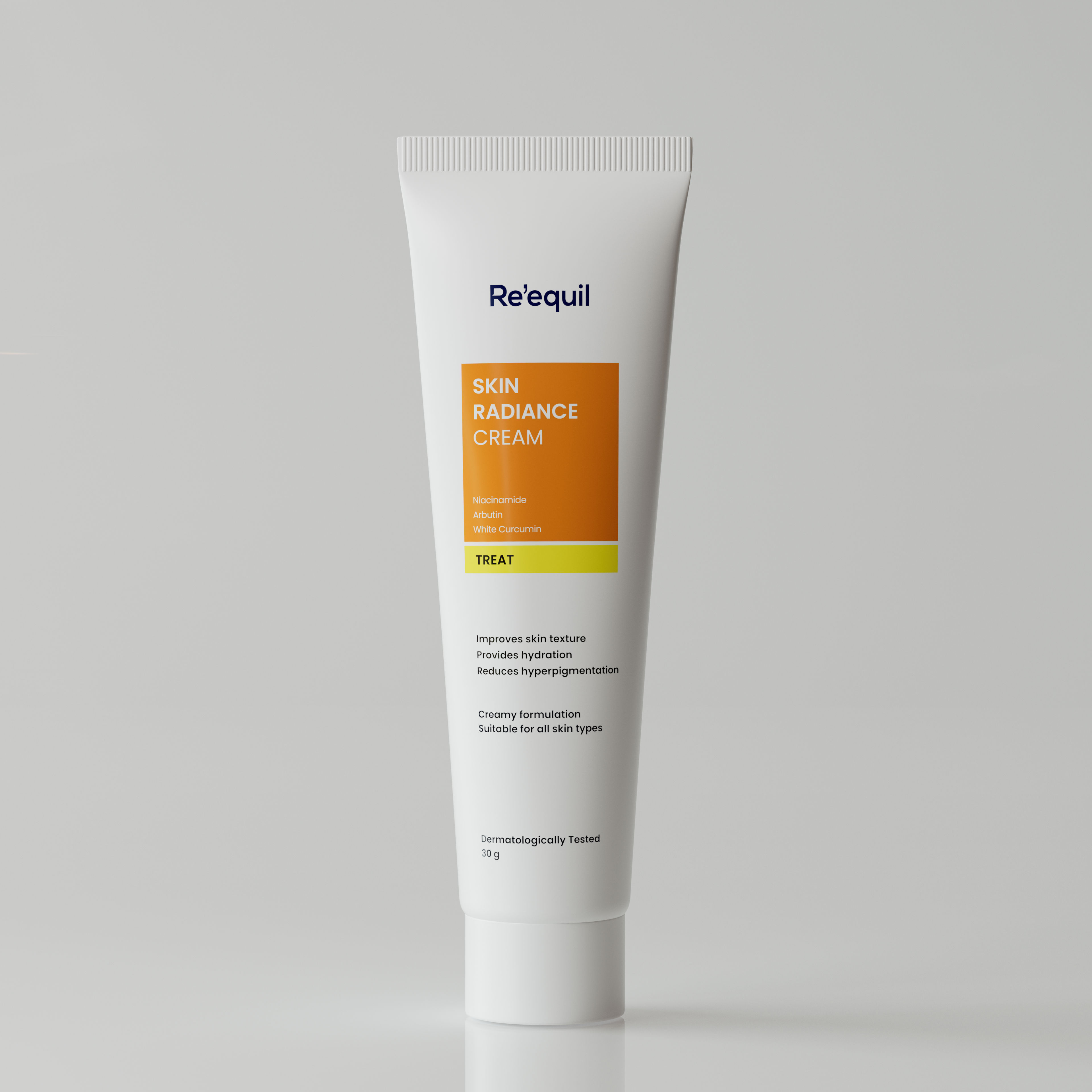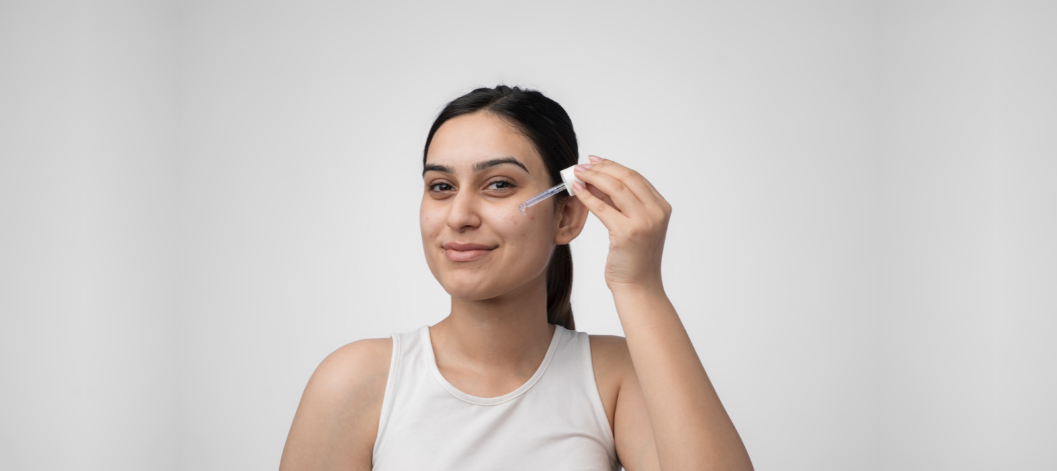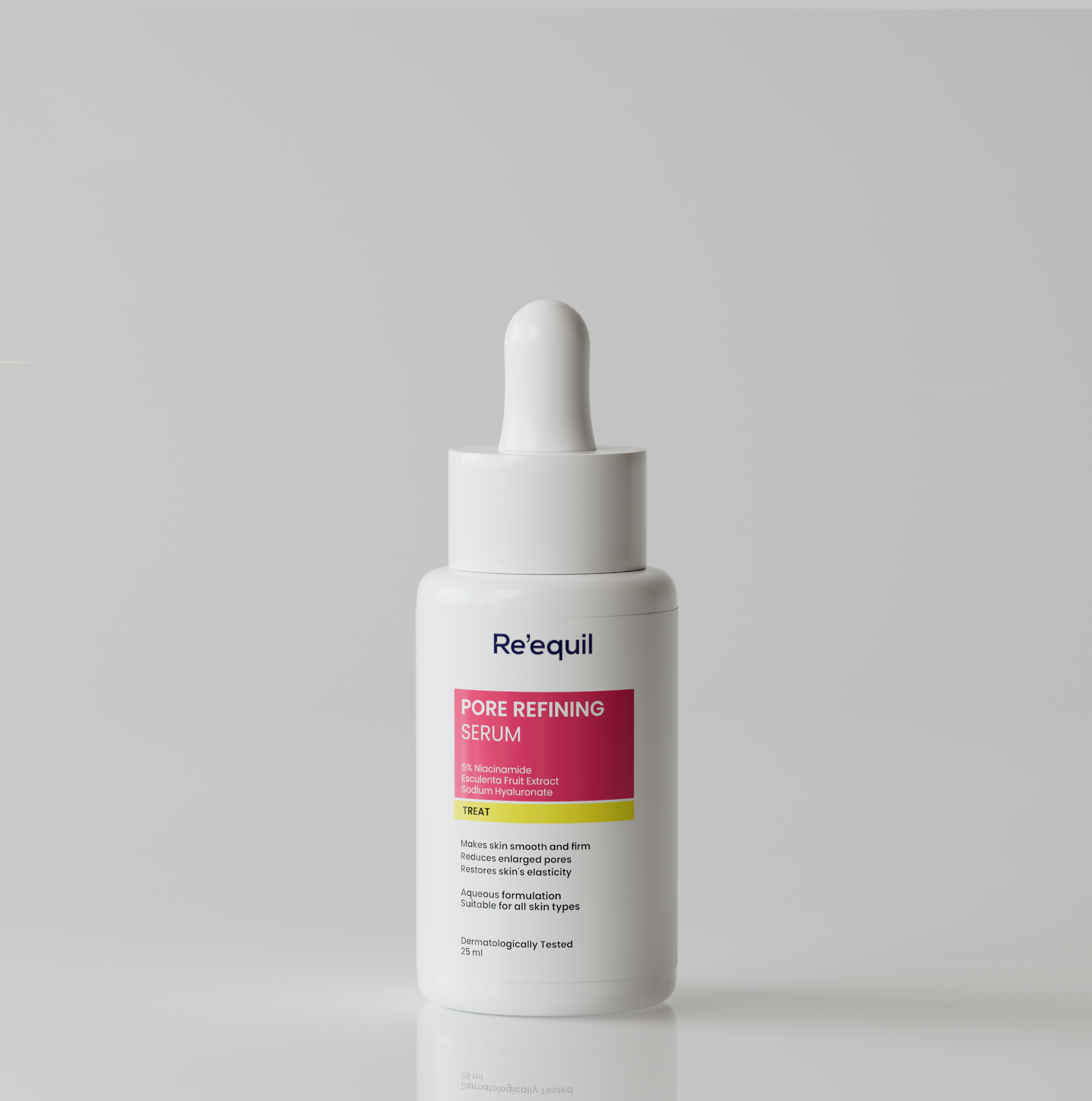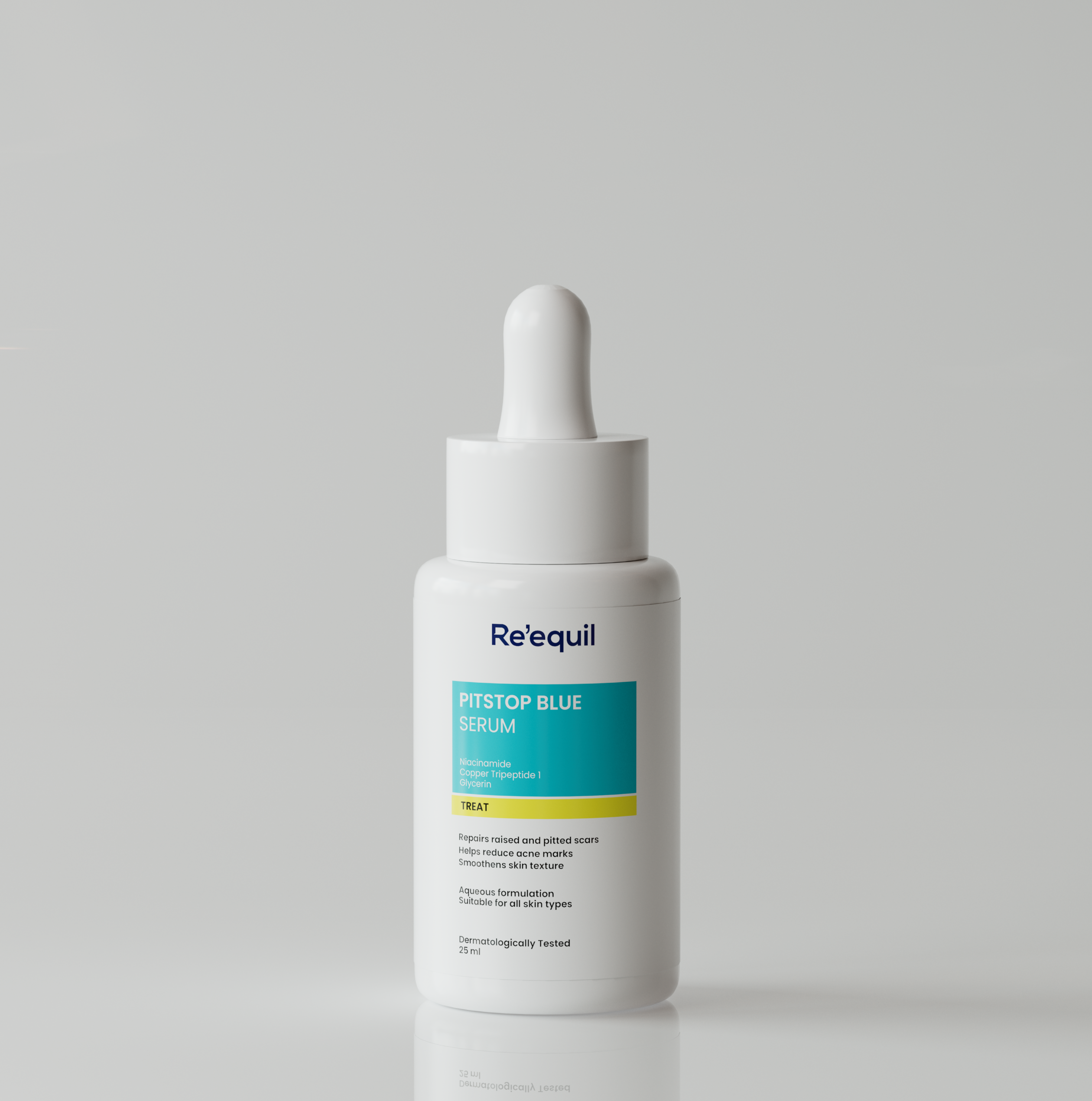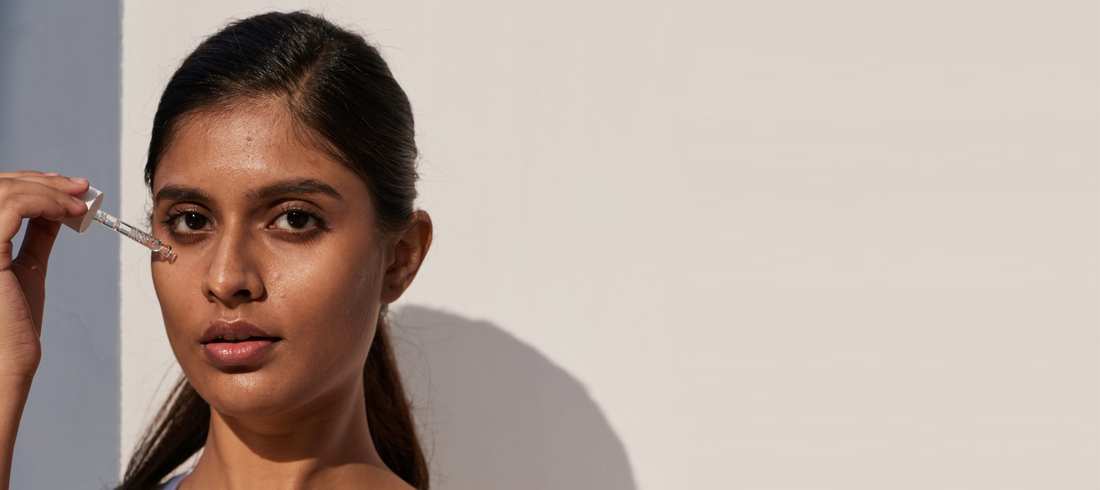Acne, a common skin condition affecting millions worldwide, can be challenging to manage due to its multifactorial nature.
From hormonal imbalances to excess oil production, various factors contribute to acne's development.
Among the myriad of treatments available, Niacinamide has emerged as a promising ingredient in acne care.
This article explores how Niacinamide can help with acne and improve overall skin health.
How does acne develop?
To understand how Niacinamide helps with acne, it is essential to know the primary factors contributing to this condition:
1. Excess Sebum Production: Overactive sebaceous glands produce more oil than needed, leading to clogged pores.
2. Clogged Pores: Dead skin cells, debris and oil accumulate in pores, creating a breeding ground for acne-causing bacteria.
3. Inflammation: Acne lesions are often accompanied by redness and swelling due to inflammatory responses.
4. Bacterial Growth: Propionibacterium acnes (P. acnes), a bacteria thriving in clogged pores, exacerbates acne by producing inflammatory mediators.
Niacinamide addresses these factors through multiple mechanisms, making it a comprehensive solution for acne management.
What is Niacinamide?
Niacinamide, also known as nicotinamide, is a water-soluble form of vitamin B3. It is a versatile ingredient in skincare, celebrated for its anti-inflammatory, antioxidant and skin barrier-repairing properties.
Unlike other active ingredients, Niacinamide is gentle on the skin, making it suitable for various skin types, including sensitive and acne-prone skin.
Benefits of Niacinamide for acne-prone skin
Niacinamide has become a standout ingredient for acne-prone skin due to its multi-faceted benefits.
It not only targets the root causes of acne but also supports the skin in its healing process.
From calming inflammation to enhancing the skin’s natural defences, Niacinamide offers a gentle yet effective solution for managing acne and improving overall skin health.
Lets dive into the key benefits that make it such a popular choice for those struggling with acne:
1. Reduces Inflammation
Acne is fundamentally an inflammatory condition.
Research has shown that Niacinamide possesses potent anti-inflammatory properties, reducing redness, swelling and irritation associated with acne lesions.
By modulating inflammatory cytokines, Niacinamide calms active breakouts and prevents the worsening of existing acne.
2. Regulates Sebum Production
Excessive oil production is one of the primary triggers of acne.
A study published in the Journal of Cosmetic and Laser Therapy demonstrated that a 2% topical Niacinamide formulation significantly reduced sebum production rates over four weeks.
By regulating sebum, Niacinamide minimizes pore blockages and prevents the formation of comedones (whiteheads and blackheads).
3. Improves Skin Barrier Function
A compromised skin barrier can worsen acne by allowing external irritants and bacteria to penetrate the skin.
Niacinamide enhances the production of ceramides—lipids essential for maintaining a healthy skin barrier.
By strengthening the barrier, Niacinamide reduces sensitivity and irritation, common issues for acne-prone individuals.
4. Prevents Clogged Pores
Niacinamide regulates keratinocyte activity, meaning, it prevents the buildup of dead skin cells that contribute to clogged pores.
This action reduces the likelihood of acne formation, particularly non-inflammatory types such as blackheads.
5. Antibacterial Effects
Although not a direct antibiotic, Niacinamide’s anti-inflammatory properties indirectly curb the proliferation of acne-causing bacteria like P. acnes.
Combined with its ability to regulate sebum, this creates an unfavorable environment for bacterial growth.
6. Minimizes Acne Scarring and Hyperpigmentation
Post-inflammatory hyperpigmentation (PIH) and acne scars are common aftermaths of acne.
Niacinamide inhibits melanin transfer to skin cells, reducing the appearance of dark spots.
Moreover, its role in stimulating collagen production aids in improving skin texture and minimizing scars over time.
Niacinamide for acne-prone skin—what do clinical studies say
Several scientific studies have examined the benefits of Niacinamide in acne treatment, revealing promising results.
These clinical trials provide valuable insights into how Niacinamide can help manage acne while improving overall skin health.
- A randomized clinical trial published in the International Journal of Dermatology compared 4% Niacinamide gel to 1% clindamycin gel in treating acne. The results revealed comparable efficacy, with the added benefit of Niacinamide’s anti-inflammatory and barrier-strengthening properties.
- Research published in the Journal of Cosmetic Dermatology highlighted Niacinamide’s effectiveness in decreasing sebum production and pore visibility, both critical factors in acne management.
- A study published in the Dermatology and Therapy journal found that a 2% Niacinamide solution effectively reduced acne lesions and inflammation in participants over a 12-week period, further supporting its role as a beneficial treatment for acne-prone skin.
How to add Niacinamide into your skincare routine?
Incorporating Niacinamide into your skincare routine can be a game-changer for managing acne and improving overall skin health.
Its versatility makes it easy to combine with other ingredients, providing a balanced approach to skincare.
Here is a step-by-step guide to seamlessly add Niacinamide into your daily regimen for optimal results -
1. Cleansing
Start with a gentle, pH-balanced cleanser to remove impurities and prepare your skin for better absorption of active ingredients.
2. Niacinamide Application
Apply a Niacinamide serum after cleansing.
Most formulations range from 2% to 12% concentration. For beginners, starting with a lower concentration is recommended to avoid potential irritation.
3. Moisturizing
Follow up with a lightweight, non-comedogenic moisturiser to lock in hydration and reinforce the skin barrier.
Products containing Ceramides or Hyaluronic Acid pair well with Niacinamide.
4. Sun Protection
Niacinamide does not make the skin photosensitive, but sunscreen remains essential to protect against UV damage and prevent hyperpigmentation.
Go for a non-greasy, broad-spectrum SPF 50, preferably oxybenzone free.
5. Pairing with Other Actives
When incorporating Niacinamide into your skincare routine, it is important to know which ingredients work well together to maximize its benefits.
Niacinamide is compatible with a variety of other actives, allowing you to tailor as per your skin’s regimen, while targeting acne and promoting overall skin health.
Here are some key ingredients that complement Niacinamide for a more effective skincare routine -
- Salicylic Acid: Salicylic acid penetrates deep into pores, exfoliates dead skin cells, and helps prevent acne by unclogging pores and reducing inflammation.
- Retinol: Retinol boosts cell turnover to prevent clogged pores and acne, while also promoting collagen production to reduce acne scars and fine lines.
- Hyaluronic Acid: Hyaluronic acid hydrates and plumps the skin, ensuring moisture retention without clogging pores, making it an essential ingredient when using acne treatments.
Additional benefits of Niacinamide for skin
Beyond acne, Niacinamide offers a range of benefits for overall skin health:
- Enhances skin elasticity: Regular use of Niacinamide boosts collagen and elastin production, improving skin firmness and reducing fine lines.
- Protects against environmental aggressors: Niacinamide’s antioxidant properties shield the skin from oxidative stress caused by pollution, UV rays, and other environmental factors.
- Reduces redness and blotchiness: Niacinamide has anti-inflammatory properties that help calm redness and irritation, making it beneficial for sensitive or rosacea-prone skin.
Potential Side Effects of Niacinamide
Niacinamide is generally well-tolerated by most skin types, making it a popular choice in skincare.
However, in rare cases, some individuals may experience mild side effects, especially when using highly concentrated formulas or combining it with other active ingredients.
Here's what to watch for:
- Redness: Some users may notice temporary redness, especially if their skin is sensitive or not used to active ingredients.
- Itching: Mild itching can occur as the skin adjusts to Niacinamide, particularly when introduced too quickly or in higher doses.
- Dryness: Although Niacinamide is known for its hydrating benefits, certain formulations might cause dryness if they include alcohol or other drying agents.
Conclusion
Niacinamide is an effective ingredient for acne care. It helps reduce inflammation, controls excess oil and prevents clogged pores.
It also strengthens the skin barrier and fades pigmentation. Backed by strong scientific research, it is a safe and reliable option for managing mild to moderate acne.
Regular use of Niacinamide can lead to clearer, healthier, and more radiant skin over time.
For individuals struggling with persistent or severe acne, combining Niacinamide with a dermatologist-recommended treatment plan can maximize its benefits and address specific skin concerns effectively.
Frequently Asked Questions
1. Can Niacinamide treat cystic acne?
Niacinamide can help reduce inflammation and regulate sebum production, but it may need to be paired with stronger treatments like retinoids or antibiotics for cystic acne.
2. Is Niacinamide better than salicylic acid for acne?
Niacinamide and salicylic acid serve different purposes. While Niacinamide soothes and strengthens the skin, salicylic acid exfoliates and unclogs pores. Their combined effect often yields the best results
3. Can I use Niacinamide every day if I have acne?
Yes, Niacinamide is gentle enough for daily use. Most formulations can be applied twice daily for optimal benefits.





